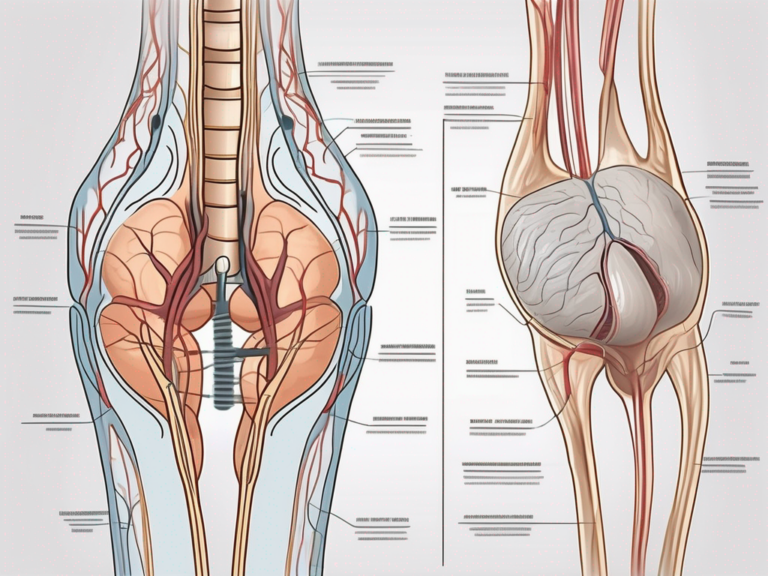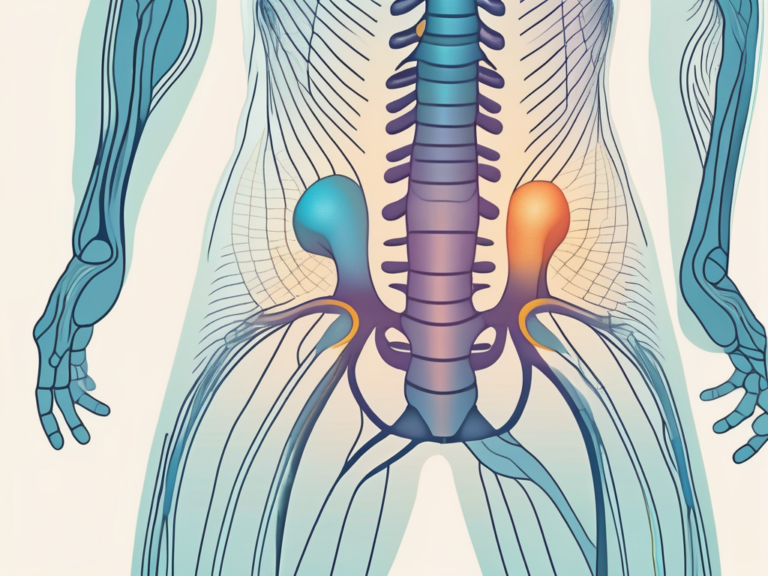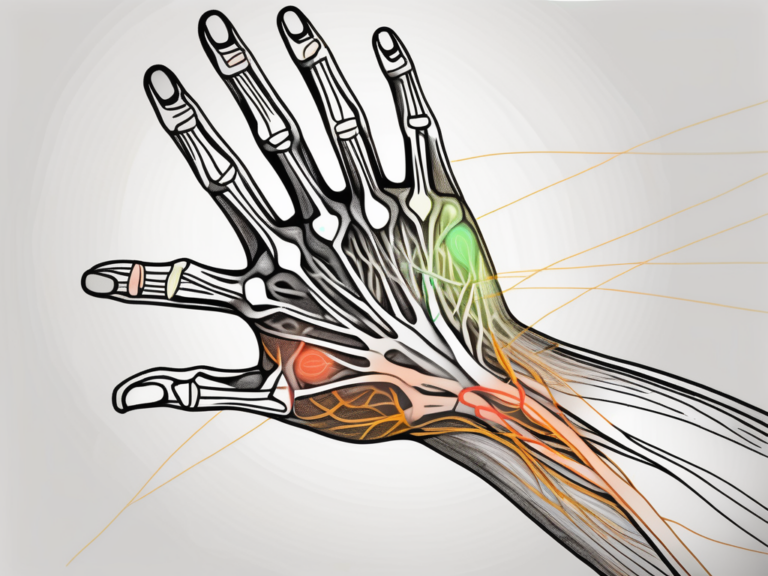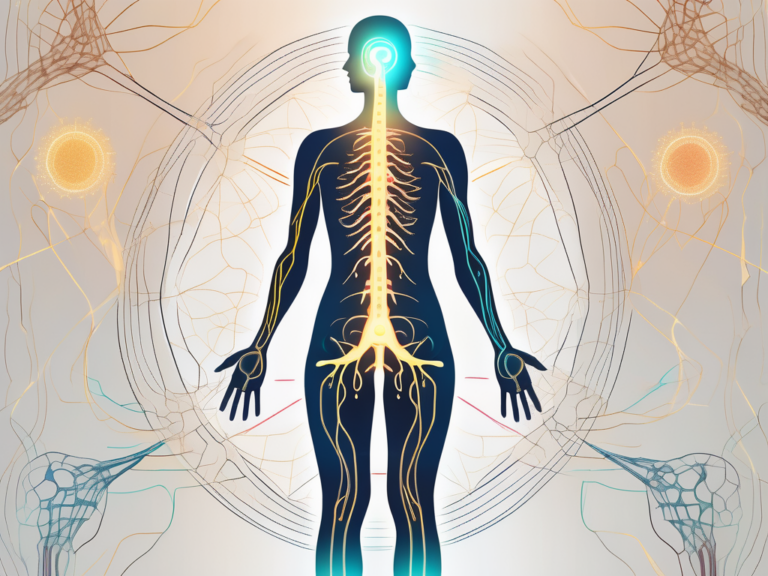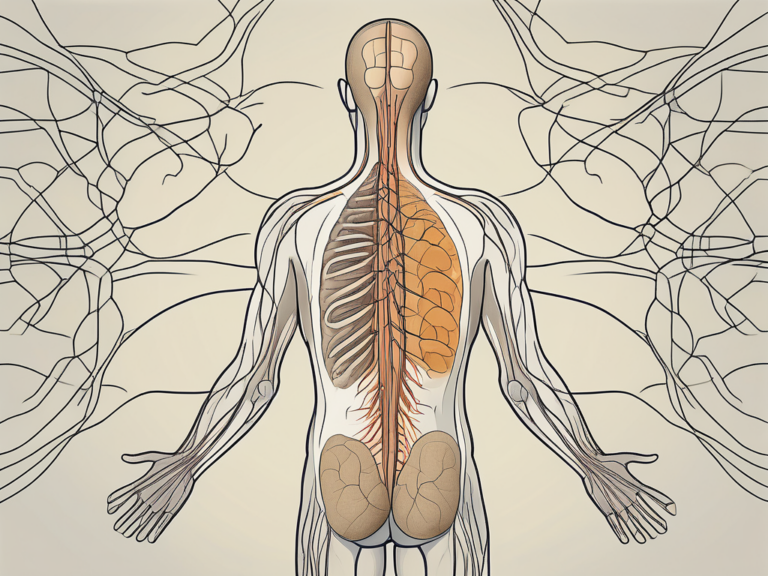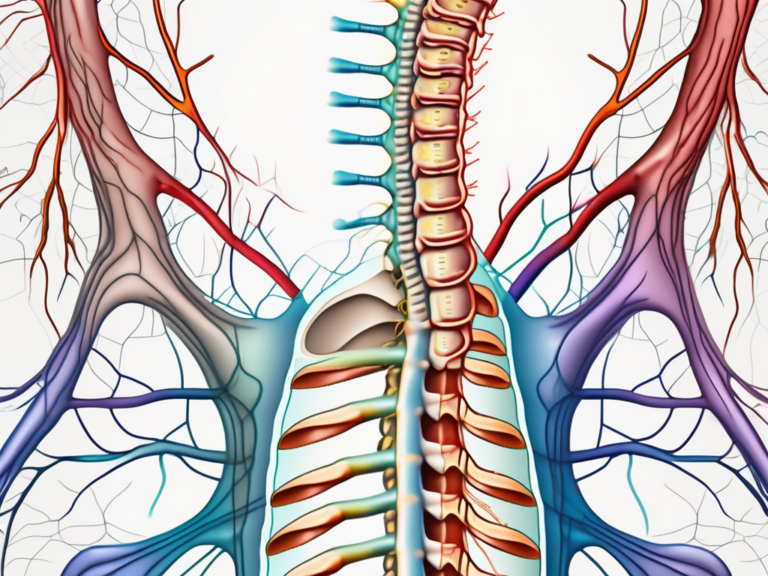Understanding Sacral Sharp Stabbing Pain: Nerve Pain When Walking or Moving
Sacral sharp stabbing pain can be a debilitating condition that affects individuals when they are walking or moving. It is important to understand the causes, symptoms, diagnosis, and treatment options for this type of pain in order to effectively manage it.
What is Sacral Sharp Stabbing Pain?
Sacral sharp stabbing pain refers to a type of nerve pain that is felt in the sacral region of the spine. The sacrum is a triangular bone located at the base of the spine, between the hip bones. This area is made up of several vertebrae and joints, which can be sources of pain when they are damaged or compressed.
Anatomy of the Sacral Region
The sacrum plays a vital role in supporting the weight of the upper body and transmitting forces from the spine to the lower extremities. It is surrounded by muscles, ligaments, and nerves that help maintain stability and mobility.
The sacral region is a complex network of structures that work together to provide support and movement. The sacrum itself is made up of five fused vertebrae, which form a sturdy base for the spine. These vertebrae are connected to the pelvis by the sacroiliac joints, which allow for limited movement and absorb shock during activities such as walking or running.
Within the sacral region, there are also numerous muscles that play a role in stabilizing the spine and pelvis. The gluteal muscles, for example, help to support the sacrum and maintain proper alignment of the pelvis. The piriformis muscle, which runs from the sacrum to the hip, is another important muscle in this area. When this muscle becomes tight or inflamed, it can contribute to sacral pain and discomfort.
Common Symptoms of Sacral Pain
Individuals experiencing sacral sharp stabbing pain may have symptoms such as:
- Sharp or stabbing pain in the sacrum
- Pain that worsens with movement, particularly walking
- Numbness or tingling in the lower back, buttocks, or legs
These symptoms can vary in intensity and duration, depending on the underlying cause of the pain. In some cases, sacral pain may be accompanied by additional symptoms such as muscle weakness or difficulty walking.
If you are experiencing any of these symptoms, it is important to consult with a medical professional for a proper diagnosis and appropriate treatment options. A healthcare provider will be able to evaluate your symptoms, perform a physical examination, and order any necessary tests to determine the cause of your sacral pain.
Treatment for sacral pain will depend on the underlying cause and may include a combination of conservative measures, such as rest, physical therapy, and pain medication. In some cases, more invasive interventions, such as injections or surgery, may be necessary to alleviate the pain and restore function.
It is important to address sacral pain promptly, as untreated or improperly managed pain can lead to decreased mobility, decreased quality of life, and potential complications. By seeking appropriate medical care, you can work towards finding relief and improving your overall well-being.
Causes of Sacral Sharp Stabbing Pain
There are several possible causes of sacral sharp stabbing pain. One common cause is nerve compression in the sacral region.
Sacral sharp stabbing pain can be a debilitating condition that affects individuals of all ages. Understanding the underlying causes of this type of pain is crucial in order to provide effective treatment and relief. Nerve compression is one such cause that often leads to sharp stabbing pain in the sacral region.
Nerve Compression and Sacral Pain
When the nerves in the sacral region become compressed or irritated, they can cause sharp stabbing pain. This compression can be due to various factors such as spinal stenosis, herniated discs, or degenerative conditions.
Spinal stenosis, a condition characterized by the narrowing of the spinal canal, can exert pressure on the nerves in the sacral region. This compression can result in sharp, shooting pain that radiates down the legs. Similarly, herniated discs, which occur when the soft cushioning discs between the vertebrae rupture or bulge, can compress the nerves in the sacrum, leading to intense pain.
Furthermore, degenerative conditions, such as osteoarthritis or spondylolisthesis, can contribute to nerve compression in the sacral region. These conditions cause the deterioration or misalignment of the spinal structures, putting additional pressure on the nerves and causing sharp stabbing pain.
Injuries Leading to Sacral Pain
Injuries to the sacral region, such as fractures or sprains, can also result in sharp stabbing pain. These injuries can occur from falls, accidents, or repetitive stress on the sacrum.
Fractures of the sacrum can occur due to high-impact accidents or falls from significant heights. The force exerted on the sacrum during such incidents can cause the bone to break, leading to severe pain and discomfort. Sprains, on the other hand, can result from sudden twisting or overstretching of the ligaments in the sacral region. These sprains can cause sharp stabbing pain that worsens with movement.
Repetitive stress on the sacrum, often seen in athletes or individuals with physically demanding jobs, can also contribute to sacral pain. The constant strain placed on the sacral region can lead to inflammation and irritation of the surrounding tissues, resulting in sharp stabbing pain.
The Connection Between Movement and Sacral Pain
The relationship between movement and sacral pain is significant. Walking, in particular, can trigger sacral pain due to the repetitive impact on the sacrum and surrounding structures.
Why Walking May Trigger Sacral Pain
When walking, the pressure and impact placed on the sacrum can exacerbate existing damage or compression in the area, leading to sharp stabbing pain. The repetitive motion can also cause inflammation and irritation of the nerves and surrounding tissues.
Furthermore, the intensity and duration of walking can play a role in the development of sacral pain. For instance, individuals who engage in long-distance walking or participate in activities such as hiking or marathon running may be more prone to experiencing sacral pain. The continuous stress placed on the sacrum during these activities can result in the accumulation of microtraumas, leading to chronic pain and discomfort.
Moreover, walking on uneven surfaces or wearing improper footwear can also contribute to sacral pain. Uneven surfaces can cause the body to compensate for balance, placing additional strain on the sacrum and its supporting structures. Similarly, wearing shoes that do not provide adequate support or cushioning can lead to poor alignment and increased pressure on the sacrum, exacerbating pain.
Other Movements That May Cause Pain
In addition to walking, other movements such as bending, lifting, or prolonged sitting can also contribute to sacral pain. These movements put stress on the sacral region, aggravating any underlying conditions or injuries.
Bending, especially when performed with poor posture or excessive force, can strain the muscles and ligaments surrounding the sacrum. This strain can lead to muscle imbalances and trigger points, causing localized pain and discomfort.
Lifting heavy objects incorrectly can also result in sacral pain. Improper lifting techniques, such as using the back instead of the legs, can place excessive stress on the sacrum and its supporting structures. Over time, this can lead to muscle strains, ligament sprains, or even herniated discs, all of which can cause sacral pain.
Prolonged sitting, especially in a slouched or hunched position, can also contribute to sacral pain. Sitting for extended periods without proper lumbar support can lead to poor posture, which places excessive pressure on the sacrum. Additionally, sitting for long durations can cause the muscles surrounding the sacrum to become tight and fatigued, leading to discomfort.
It is important to note that while movement can contribute to sacral pain, it can also play a vital role in its management and prevention. Engaging in regular exercise, such as low-impact activities like swimming or cycling, can help strengthen the muscles supporting the sacrum and improve overall posture. Additionally, incorporating stretching and flexibility exercises into a daily routine can help alleviate muscle imbalances and reduce the risk of sacral pain.
Diagnosis of Sacral Sharp Stabbing Pain
Proper diagnosis of sacral sharp stabbing pain involves a thorough examination and diagnostic tests. It is important to identify the underlying cause of the pain in order to develop an appropriate treatment plan.
Physical Examination and History
During a physical examination, a healthcare professional may assess your range of motion, perform neurological tests, and review your medical history to identify any potential causes of the pain. This comprehensive evaluation helps in narrowing down the possible causes of the sacral pain.
During the range of motion assessment, the healthcare professional will carefully observe your movements and check for any limitations or abnormalities. They may ask you to perform specific movements such as bending forward, backward, or sideways to assess the flexibility and mobility of your sacral region. This evaluation helps in determining if there are any musculoskeletal issues contributing to the sharp stabbing pain.
In addition to the range of motion assessment, neurological tests may also be conducted. These tests evaluate the functioning of the nerves in the sacral region. The healthcare professional may check for sensation, reflexes, and muscle strength in the lower extremities. Abnormal findings in these tests can indicate nerve compression or damage, which can cause sharp stabbing pain.
Reviewing your medical history is another crucial aspect of the diagnostic process. The healthcare professional will inquire about any previous injuries, surgeries, or medical conditions that may be related to the sacral pain. They will also ask about the duration, intensity, and frequency of the pain, as well as any factors that worsen or alleviate it. This information helps in identifying potential triggers or underlying conditions that may be causing the sharp stabbing pain.
Imaging Tests for Sacral Pain
In some cases, imaging tests such as X-rays, MRI, or CT scans may be ordered to visualize the sacral region and identify any structural abnormalities or damage. These imaging modalities provide detailed images of the bones, muscles, and soft tissues in the sacral area, allowing healthcare professionals to detect any fractures, tumors, infections, or degenerative changes that may be contributing to the pain.
X-rays are often the first imaging test recommended for sacral pain. They can reveal fractures, dislocations, or other bone abnormalities that may be causing the sharp stabbing pain. X-rays are quick and non-invasive, making them a convenient initial diagnostic tool.
If the X-rays do not provide sufficient information, an MRI (Magnetic Resonance Imaging) may be ordered. MRI uses a powerful magnetic field and radio waves to generate detailed images of the sacral region. It can detect soft tissue injuries, such as herniated discs or ligament tears, that may not be visible on X-rays. MRI is particularly useful for evaluating nerve compression or inflammation, which can cause sharp stabbing pain.
In certain cases, a CT (Computed Tomography) scan may be recommended. CT scans provide cross-sectional images of the sacral area, allowing healthcare professionals to visualize the bones, blood vessels, and organs in detail. This imaging modality is especially helpful in detecting fractures, tumors, or infections that may be contributing to the sharp stabbing pain.
Once the physical examination and imaging tests are complete, the healthcare professional will analyze the findings to determine the cause of the sacral sharp stabbing pain. This comprehensive evaluation is essential for developing an individualized treatment plan that targets the underlying issue and provides relief from the pain.
Treatment Options for Sacral Sharp Stabbing Pain
Experiencing sacral sharp stabbing pain can be a challenging and debilitating condition. However, there are various treatment options available to manage this type of pain and improve your quality of life.
When it comes to treating sacral sharp stabbing pain, there are two main categories of treatment: non-surgical and surgical interventions. The choice of treatment depends on the severity of the pain and the underlying cause.
Non-Surgical Treatments
Non-surgical treatments are often the first line of defense against sacral pain. These treatments aim to alleviate pain, reduce inflammation, and improve the overall function of the sacral area.
One of the non-surgical treatment options for sacral pain is physical therapy. Physical therapists can develop personalized exercise programs to improve strength and flexibility in the affected area. These exercises can help relieve pain and restore normal movement patterns.
In addition to physical therapy, medications can also play a crucial role in managing sacral sharp stabbing pain. Nonsteroidal anti-inflammatory drugs (NSAIDs) are commonly prescribed to reduce pain and inflammation. Muscle relaxants may also be prescribed to help relax the muscles in the sacral area, providing relief from pain and discomfort.
Another non-surgical treatment option is corticosteroid injections. These injections deliver powerful anti-inflammatory medication directly to the affected area, providing temporary relief from pain. Corticosteroid injections are often used in conjunction with physical therapy to maximize the benefits of both treatments.
It is important to note that the choice of non-surgical treatments may vary depending on the individual’s specific condition. Working closely with a healthcare professional is essential to determine the most appropriate treatment plan for your sacral sharp stabbing pain.
Surgical Interventions for Sacral Pain
In severe cases where non-surgical treatments have not provided sufficient relief, surgical interventions may be necessary to address the underlying cause of the sacral pain.
One surgical option for sacral pain is decompression surgery. This procedure aims to relieve pressure on the nerves in the sacral area by removing any structures that may be compressing them. Decompression surgery can help alleviate pain and restore normal nerve function.
Another surgical option is spinal fusion. This procedure involves fusing two or more vertebrae in the sacral area to stabilize the spine and reduce pain. Spinal fusion can be an effective treatment for sacral pain caused by spinal instability or degenerative conditions.
In some cases, nerve release procedures may be performed to relieve sacral pain. These procedures involve releasing or decompressing the nerves that are causing the pain, allowing for pain relief and improved function.
It is important to note that surgical interventions are typically considered when conservative treatments have not provided sufficient relief. The decision to undergo surgery should be made in consultation with a healthcare professional who can assess the individual’s specific condition and determine the most appropriate course of action.
In conclusion, sacral sharp stabbing pain can be effectively managed through a combination of non-surgical and surgical treatments. Non-surgical options such as physical therapy, medications, and corticosteroid injections can provide relief and improve function. However, in severe cases, surgical interventions such as decompression surgery, spinal fusion, or nerve release procedures may be necessary. Working closely with a healthcare professional is crucial to determine the most appropriate treatment plan for your sacral sharp stabbing pain.
Living with Sacral Sharp Stabbing Pain
Living with sacral sharp stabbing pain can be challenging, but there are strategies that can help manage the condition.
Pain Management Techniques
Various pain management techniques can be employed to alleviate sacral pain, including:
- Hot or cold therapy to reduce inflammation
- Stretching and strengthening exercises to improve mobility and stability
- Relaxation techniques such as deep breathing or meditation
It is essential to consult with a healthcare professional to develop an individualized pain management plan.
Lifestyle Adjustments for Sacral Pain
Adjustments to daily activities and lifestyle can also help reduce sacral pain. This may include using proper ergonomics, maintaining good posture, avoiding excessive sitting or standing, and engaging in low-impact exercises.
It is important to remember that each individual’s experience with sacral sharp stabbing pain may vary, and what works for one person may not work for another. Consulting with a healthcare professional is crucial to receive an accurate diagnosis and appropriate treatment options tailored to your specific condition.
In conclusion, understanding the causes, symptoms, diagnosis, and treatment options for sacral sharp stabbing pain is essential for individuals experiencing this condition. By working closely with healthcare professionals, individuals can develop effective strategies to manage the pain and improve their quality of life.

